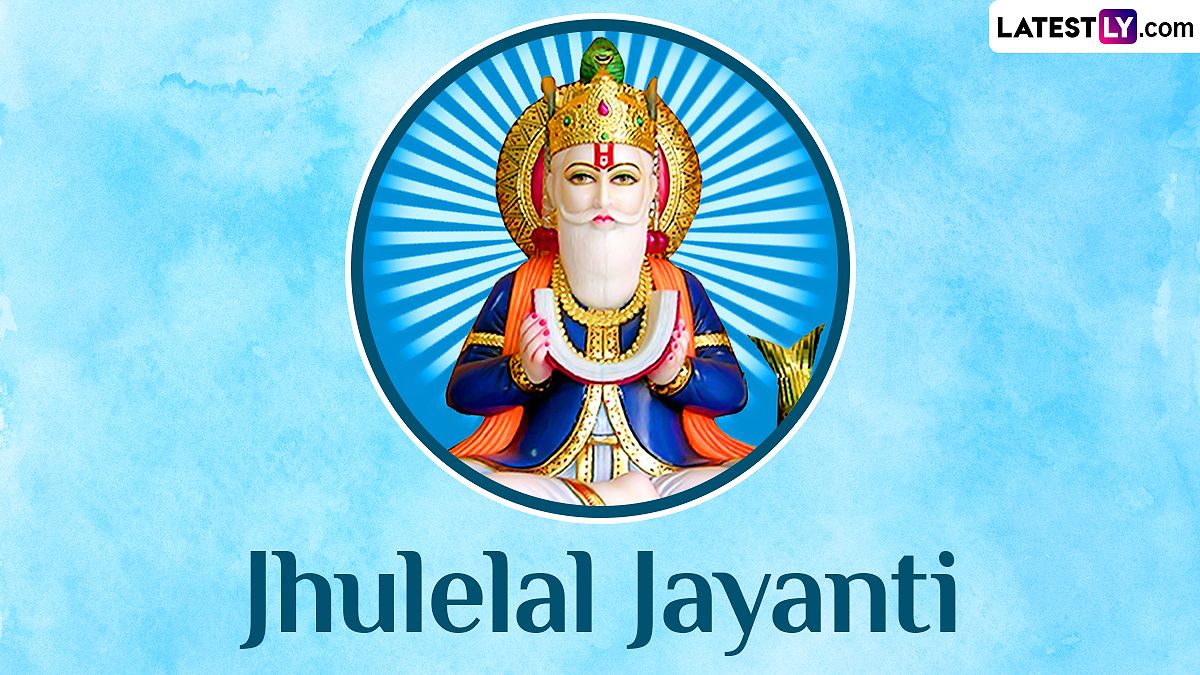Learn about Jhulelal Jayanti, the festival that commemorates the birth of Jhulelal, the patron saint of Sindhis. Discover the rituals, customs, and cultural significance of this auspicious day. Join the Sindhi community in celebrating unity, faith, and the triumph of good over evil.
Jhulelal Jayanti: Celebrating the Birth of Sindhi Patron Saint
Jhulelal Jayanti, also known as Cheti Chand, is a significant festival celebrated by the Sindhi community in India. This auspicious day commemorates the birth anniversary of Jhulelal, who is considered the patron saint of Sindhis. Jhulelal Jayanti usually falls on the second day of the Chaitra month in the Hindu calendar. This day not only marks the birth of Jhulelal but also signifies the arrival of spring and the harvesting season.
Jhulelal Jayanti, also known as Cheti Chand, is a significant festival celebrated by the Sindhi community in India. This auspicious day commemorates the birth anniversary of Jhulelal, who is considered the patron saint of Sindhis. Jhulelal Jayanti usually falls on the second day of the Chaitra month in the Hindu calendar. This day not only marks the birth of Jhulelal but also signifies the arrival of spring and the harvesting season.
Jhulelal Jayanti, also known as Cheti Chand, is a significant festival celebrated by the Sindhi community in India. This auspicious day commemorates the birth anniversary of Jhulelal, who is considered the patron saint of Sindhis. Jhulelal Jayanti usually falls on the second day of the Chaitra month in the Hindu calendar. This day not only marks the birth of Jhulelal but also signifies the arrival of spring and the harvesting season.
The Significance of Jhulelal Jayanti
Jhulelal Jayanti is observed with various rituals and customs. Devotees offer prayers to Jhulelal, seeking blessings, protection, and prosperity for their families and communities. This festival holds immense cultural and religious significance for Sindhis worldwide. The day is known as Cheti Chand due to the moon's first appearance during the Cheti month.
Jhulelal Jayanti is observed with various rituals and customs. Devotees offer prayers to Jhulelal, seeking blessings, protection, and prosperity for their families and communities. This festival holds immense cultural and religious significance for Sindhis worldwide. The day is known as Cheti Chand due to the moon's first appearance during the Cheti month.
Jhulelal Jayanti is observed with various rituals and customs. Devotees offer prayers to Jhulelal, seeking blessings, protection, and prosperity for their families and communities. This festival holds immense cultural and religious significance for Sindhis worldwide. The day is known as Cheti Chand due to the moon's first appearance during the Cheti month.
Rituals and Customs of Jhulelal Jayanti
The celebration of Cheti Chand in India involves fasting, making offerings, and worshiping near water bodies such as rivers, lakes, and ponds. A diya made of wheat flour with five wicks is lit, and Behrana Sahib, an offering consisting of an oil diya, cardamom, sugar, fruits, and Akho, is immersed in the water.
The celebration of Cheti Chand in India involves fasting, making offerings, and worshiping near water bodies such as rivers, lakes, and ponds. A diya made of wheat flour with five wicks is lit, and Behrana Sahib, an offering consisting of an oil diya, cardamom, sugar, fruits, and Akho, is immersed in the water.
The celebration of Cheti Chand in India involves fasting, making offerings, and worshiping near water bodies such as rivers, lakes, and ponds. A diya made of wheat flour with five wicks is lit, and Behrana Sahib, an offering consisting of an oil diya, cardamom, sugar, fruits, and Akho, is immersed in the water.
The Legend of Jhulelal Jayanti
Cheti Chand holds great importance for Sindhis as it is believed that Jhulelal saved the community from a ruler who aimed to destroy Sindhi culture. It is also a day of gratitude and worship to the God of Water. As per tradition, Sindhis observe a forty-day prayer called Chaliho before celebrating Cheti Chand.
According to legends, Sindhi Hindus faced the threat of forced conversion to Islam by a tyrant named Mirkshah. They prayed to the river God for protection, and after forty days of worship, their prayers were answered. The River God promised them that a divine child would be born in Nasarpur to save them from the tyrant. This child came to be known as Saint Jhulelal. Thus, Cheti Chand is celebrated with great enthusiasm and joy.
According to legends, Sindhi Hindus faced the threat of forced conversion to Islam by a tyrant named Mirkshah. They prayed to the river God for protection, and after forty days of worship, their prayers were answered. The River God promised them that a divine child would be born in Nasarpur to save them from the tyrant. This child came to be known as Saint Jhulelal. Thus, Cheti Chand is celebrated with great enthusiasm and joy.
Unity, Faith, and Triumph of Good Over Evil
On this special day, Sindhis come together to celebrate their culture, express gratitude, and seek blessings for a prosperous future. The festival of Jhulelal Jayanti not only strengthens the bond among Sindhis but also spreads the message of unity, faith, and the triumph of good over evil.
On this special day, Sindhis come together to celebrate their culture, express gratitude, and seek blessings for a prosperous future. The festival of Jhulelal Jayanti not only strengthens the bond among Sindhis but also spreads the message of unity, faith, and the triumph of good over evil.
On this special day, Sindhis come together to celebrate their culture, express gratitude, and seek blessings for a prosperous future. The festival of Jhulelal Jayanti not only strengthens the bond among Sindhis but also spreads the message of unity, faith, and the triumph of good over evil.


